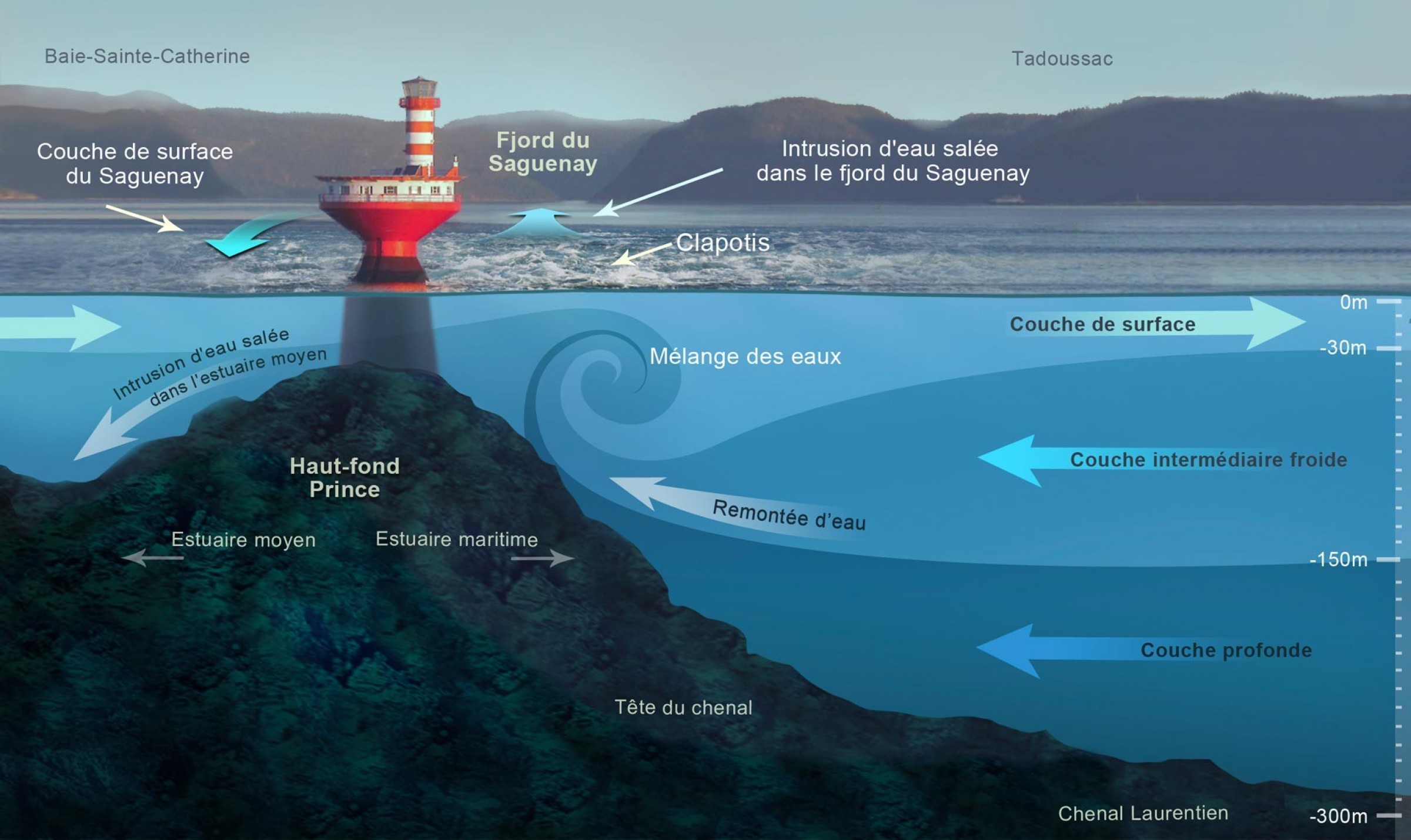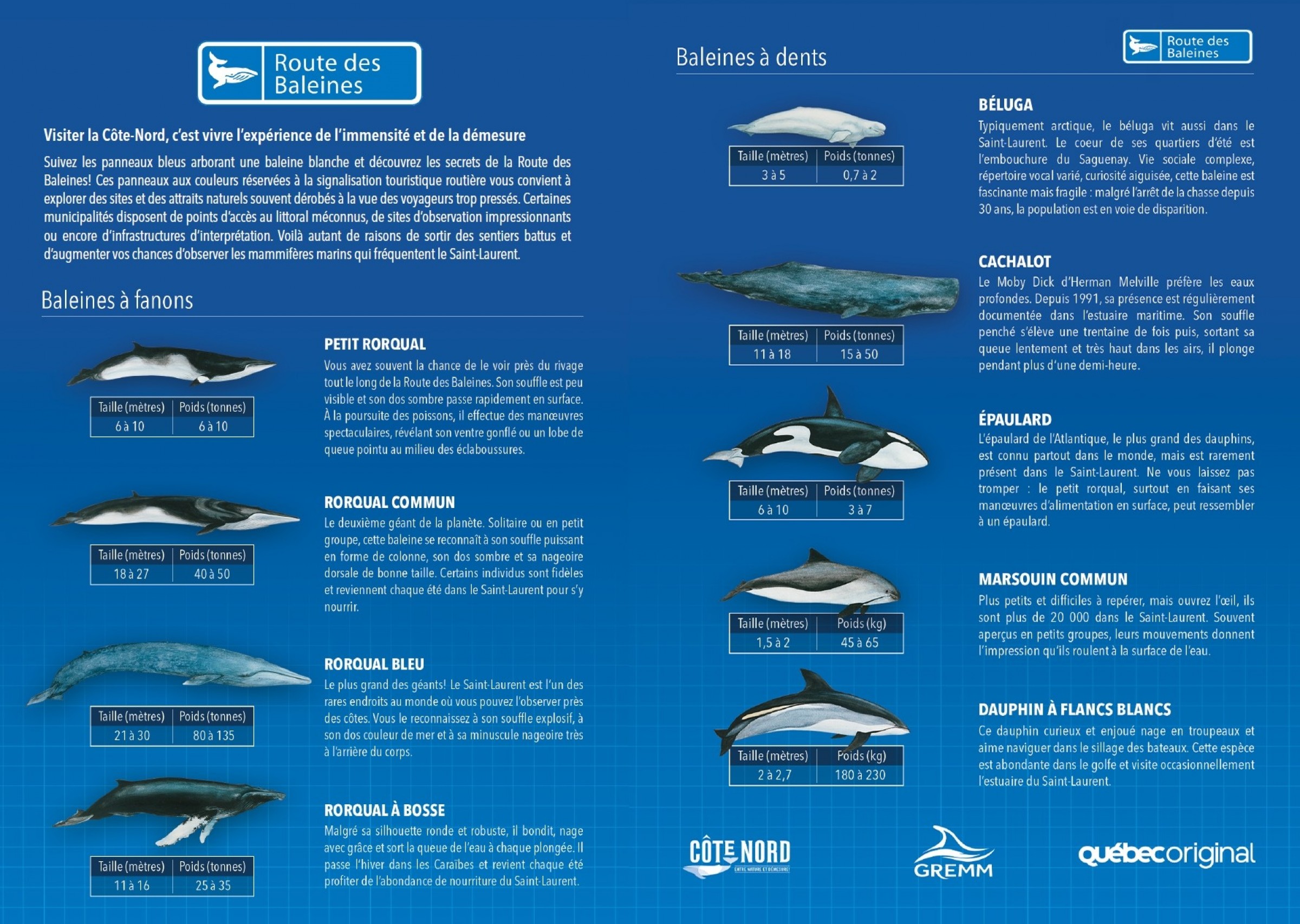Learn more about whales without getting wet!
If you're not a fan of zodiac rides out at sea... No problem, you can still learn more about the giants of the ocean! There are several interpretation centers and scientific facilities along the coast that will allow you to immerse yourself in the history of the marine mammals that roam the Saint Lawrence River.
Did you know that?
The Laurentian Channel is an underwater valley almost 450 m deep from Cabot Strait (at the mouth of the Gulf) to the estuary and about 300 m to Les Escoumins. At the height of Tadoussac, the valley reaches a shoal, with a depth of about twenty meters. This is called the head of the Laurentian Channel.
The deep waters of the Laurentian Channel are cold and rich in decomposed organic matter. In the deep layer, water moves from the Atlantic to the head of the Laurentian Channel. When it reaches the shoal, it is forced to rise under the effect of the tides. It then mixes with surface water, enriches it, cools it and oxygen.
It is these cold runs, or upwellings, that explain the high productivity near the mouth of the Saguenay. The phytoplankton on the surface proliferates thanks to the nutrient supply of the lifts and the light energy of the Sun. Because phytoplankton is at the base of the food chain, it promotes the accumulation of zooplankton and then fish, which serve as food for marine mammals.

Crédit photo : Parc marin du Saguenay-Saint-Laurent
